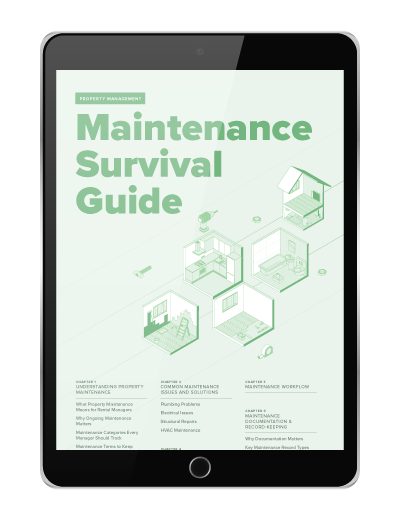When a tenant signs a lease, they’re committing to pay rent and take care of the unit they occupy. But what happens if there’s damage, unpaid rent, or a broken lease? That’s where the security deposit comes into play.
For property managers, the security deposit isn’t just a financial safeguard—it’s a critical part of lease enforcement, unit turnover, and risk reduction. When handled properly, it protects both the property owner and the tenant.
In this post, we’ll break down what a security deposit is, how much landlords can charge, how to manage it legally, and what property managers should know to avoid common mistakes.
What Is a Security Deposit?
A security deposit is a refundable sum of money collected from a tenant before they move into a rental unit. It’s held by the landlord or property manager as a form of financial protection in case the tenant:
- Damages the property beyond normal wear and tear
- Fails to pay rent
- Breaks the lease early
- Leaves the unit in unsanitary or unlivable condition
If none of these issues occur, the deposit is typically returned to the tenant at the end of their lease.
The amount, conditions for deductions, and timeline for return are governed by state and local laws, which vary significantly.
What Does a Security Deposit Cover?
A security deposit is designed to cover legitimate costs a landlord incurs due to tenant actions or lease violations. Common deductions may include:
- Unpaid rent or late fees
- Excessive cleaning costs after move-out
- Repair of tenant-caused damage (e.g., holes in walls, broken fixtures)
- Replacement of lost keys or remotes
- Damaged appliances or flooring
- Lease-breaking penalties, if allowed under the lease and local law
It’s important to note that normal wear and tear—such as faded paint, minor scuffs, or aging appliances—cannot be deducted from the deposit.
How Much Can Landlords Charge?
Security deposit limits vary by state, and sometimes by city. Common rules include:
- One to two months’ rent: Most states cap the deposit at one or two months of rent. Some allow more for furnished units.
- Separate pet deposits: In many areas, landlords can charge an additional refundable pet deposit, though some states limit this or require it to be nonrefundable.
- Last month’s rent vs. deposit: These are separate concepts. Collecting both is allowed in some states but must be clearly documented in the lease.
As a property manager, it’s your job to ensure deposit amounts comply with state law—and to communicate them clearly to tenants during the lease signing process.
How Should Security Deposits Be Held?
In many states, security deposits must be kept in a separate escrow or trust account, not mixed with operating funds. Depending on your location, you may also be required to:
- Pay the tenant interest on the deposit
- Provide an annual statement showing how it’s held
- Return the deposit within a certain timeframe (e.g., 14 to 30 days) after move-out
- Deliver a written itemization of any deductions made
Failing to follow these rules can result in penalties, including having to pay back the full deposit plus damages, or losing the right to withhold anything—even in cases of actual damage.
Security Deposits vs. Other Move-In Fees
Security deposits are often confused with other types of upfront charges. Here’s how they compare:
| Fee Type | Refundable? | Purpose |
| Security Deposit | Yes | Covers damage, unpaid rent, lease violations |
| First/Last Month’s Rent | No (treated as rent) | Prepaid rent for the beginning or end of lease |
| Application Fee | No | Covers screening costs |
| Move-In/Administrative Fee | Usually no | Covers admin costs; often nonrefundable |
| Pet Deposit | Sometimes | Covers pet-related damage (if refundable) |
Clearly stating which fees are refundable—and under what conditions—helps avoid tenant confusion and disputes.
Security Deposit in Practice: A Scenario
You manage a 10-unit building, and one tenant just moved out after a 12-month lease. Before they moved in, they paid:
- First month’s rent: $1,500
- Security deposit: $1,500
- Pet deposit: $300
During move-out inspection, you find:
- Minor wall scuffs (normal wear and tear)
- A broken window blind ($45 to replace)
- Stained carpet from a dog accident in one bedroom (pet damage)
You deduct:
- $45 for the blind
- $200 for professional carpet cleaning
The tenant receives:
- $1,255 of their $1,500 deposit
- Full return of the pet deposit less $200, if local law allows pet-related deductions
You provide a written breakdown with receipts and return the remaining funds within the legal timeframe.
Why Security Deposits Matter for Property Managers
Security deposits are more than just financial protection—they’re also part of your resident relationship strategy and risk management toolkit.
Reduce owner risk: Deposits create a financial cushion if something goes wrong—helping preserve the property’s condition and rental income.
Reinforce lease terms: When tenants know their deposit is on the line, they’re more likely to comply with lease policies and leave the unit in good condition.
Prevent disputes: Having funds on hand to cover repairs reduces the chance of arguments over who should pay.
Professionalize operations: Clear deposit procedures build trust with tenants and demonstrate that you run a well-organized, legally compliant business.
Best Practices for Managing Security Deposits
To avoid legal trouble and build strong tenant relationships, keep these best practices in mind:
- Use move-in and move-out checklists: Document condition with photos and signed forms.
- Communicate deposit policies clearly: Outline everything in the lease and at move-in.
- Follow local laws exactly: Deposit limits, deadlines, and account types vary.
- Provide receipts for deductions: Transparency builds trust and helps prevent disputes.
- Use property management software: Track deposits, generate letters, and automate deadlines more easily.
Frequently Asked Questions
Is the security deposit taxable income?
No. Security deposits are not income unless you keep part or all of the deposit after move-out. Retained funds for unpaid rent or damage must then be reported.
How soon do I need to return the deposit?
This varies by state—typically between 14 and 30 days. Check your local laws for exact deadlines.
Can I charge more if the tenant has pets?
Yes, but rules vary. Some states allow refundable pet deposits; others cap the total deposit or require separate pet fees instead.
What if the tenant breaks the lease?
Depending on the lease and local law, you may be able to withhold part or all of the deposit to cover lost rent or re-rental costs.
What happens if I don’t return the deposit on time?
You may lose the right to withhold any of the deposit—and in some states, be required to pay penalties or legal fees.
Read more on
